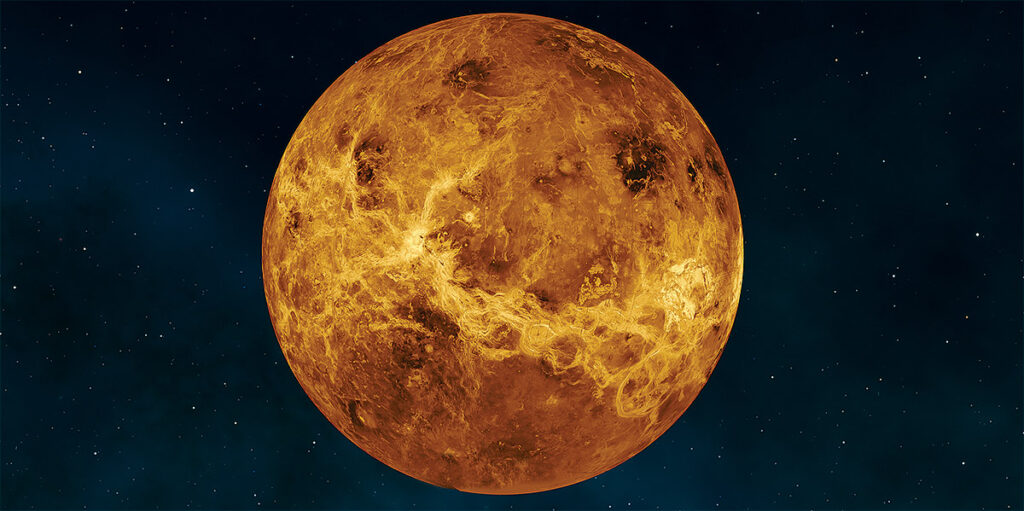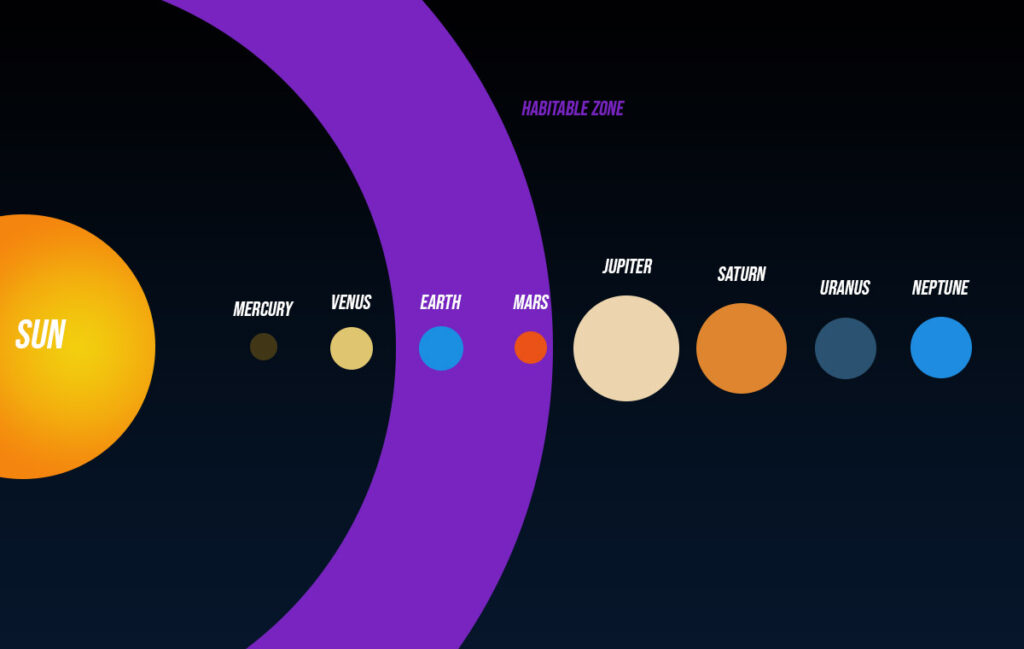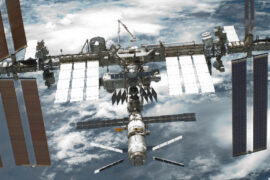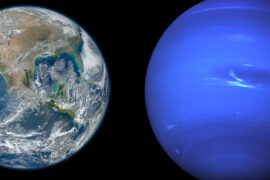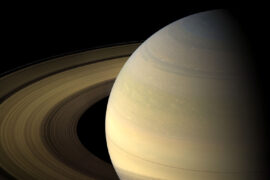There are four planets in the Solar system with a solid surface: Mercury, Venus, Mars, and of course, Earth. We could potentially land of them and they are relatively close to Earth. They were also formed around the same time and from elements similar to those of our planet. So that begs the question. Could they be habitable? In this article, we are going to focus only on one of them. Let’s answer the question. Could Venus be habitable?
Short answer: No. Venus is not habitable and it is not in the habitable zone of the Solar system. The planet is too hot and its atmosphere is too toxic. Even though it has a solid surface, most of our metals would melt in Venus’ atmosphere, making it very hard to even land.
To dive deeper into the reasons why Venus is not habitable let’s take a step back and define what makes a planet viable for this.
What makes a planet habitable?
The definition of what is exactly a habitable planet is a bit vague and there are multiple opinions about it, but most astronomers agree on the following two conditions.
- The planet must be located in the habitable zone of its star system
- The planet must have liquid water in its surface
The habitable zone, also known as the goldilocks zone, is the area in the Solar system, or any other star system with planets, where the star is at the necessary distance for the planets in the area to be able to have the temperature range at which liquid water can exist in its surface.
Just being in the habitable zone doesn’t mean a planet will be able to support water. Other factors like having a solid surface, and certain atmospheric conditions, also need to line up for a planet to support liquid water.
Why isn’t Venus habitable?
Venus does not meet any of the two requirements needed to be considered habitable. It’s not located in the habitable zone of the Solar system, and it can’t support liquid water.
Water can exist in liquid form at temperatures between 273K and 373K (-0.15°C to 99.85°C). Because we don’t have exact measurements of where these temperatures are possible in the Solar system and orbital mechanics make it harder to calculate, we can only make estimates about it. The only thing we know for sure is Earth is inside the habitable, but where it starts and where it ends changes depending on who you ask.
Still, pretty much every astronomer agrees that Venus is either barely scraping the line where the habitable zone starts or completely outside of it.
The following image shows one of these estimates and shows where the habitable zone is.
Even if Venus was inside the habitable zone, its atmospheric and geological conditions don’t let it support liquid water on its surface.
The surface of the planet is full of active volcanoes that are constantly pushing tons of carbon dioxide into the atmosphere. This carbon dioxide gets trapped because of Venus’ dense atmosphere and heats the planet to hellish temperatures. The average temperature in the surface is about 900°F (475°C). Any water on Venus would instantly evaporate.
Can we make Venus habitable?
Terraforming Venus would theoretically be possible. However, out of all the terrestrial planets in the Solar system, it would probably be the hardest to make habitable. So much it might not be worth the trouble because Mars is by far a better option.
There are two main problems when it comes to terraforming Venus
- All the carbon dioxide in the atmosphere would need to be somehow cleared.
- Water would need to be introduced from a different source.
For the first problem regarding carbon dioxide, we don’t have a solution. If we had one, we wouldn’t be worrying so much about climate change on Earth as we could simply use that same approach to fix it. Some ideas have been thrown around by scientists, like genetically engineering algae that could process the CO2, or making minerals that could absorb it, but at the moment those are just in the realm of theories.
If there ever was water on Venus, it’s long gone. There is very little hydrogen and oxygen left in its atmosphere. So, in order for the planet to have water, it would have to be brought from somewhere else, for example by capturing a large ice comet and softly crashing it into the planet.
Was Venus ever habitable?
There are conflicting opinions about whether or not Venus was ever habitable.
The habitable zone of a star is constantly changing as the star goes through its lifespan. In fact, in a few billion years, when the Sun expands, the habitable zone will be located somewhere between Jupiter and Saturn, making Earth completely unhabitable. We will hopefully be long gone, colonizing other planets by then.
Some models say Venus could have been habitable four billion years ago, while others say it never was.
The truth is, we simply don’t have enough information to know at this point if Venus ever had the conditions to support life, but as science advances, we will keep on learning more about it.
In 2028 and 2030, the DAVINCI+ and VERITAS missions will be launched by the European Space Agency and NASA. These missions will help us learn more about Venus and will hopefully solve some of these mysteries.
Summary
- Venus is not habitable. It can’t support water.
- It is unlikely Venus will ever be made habitable. We have much better choices.
- We don’t know if Venus was ever in the habitable zone.


